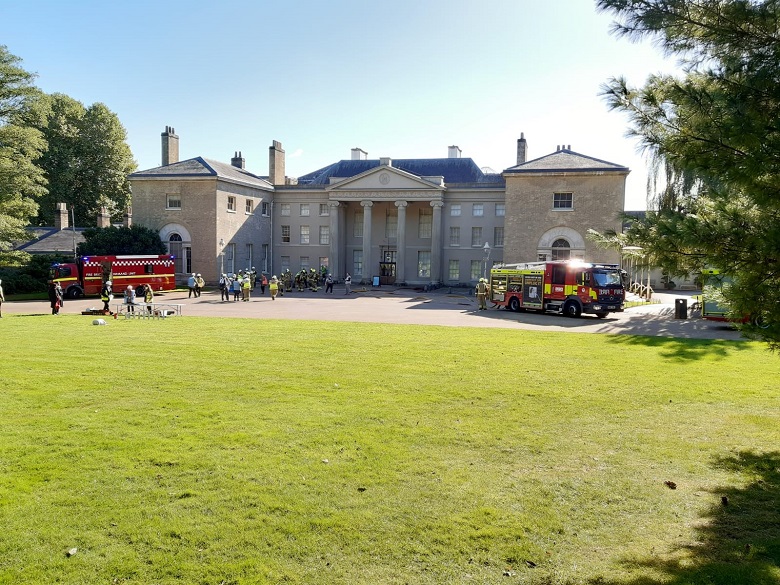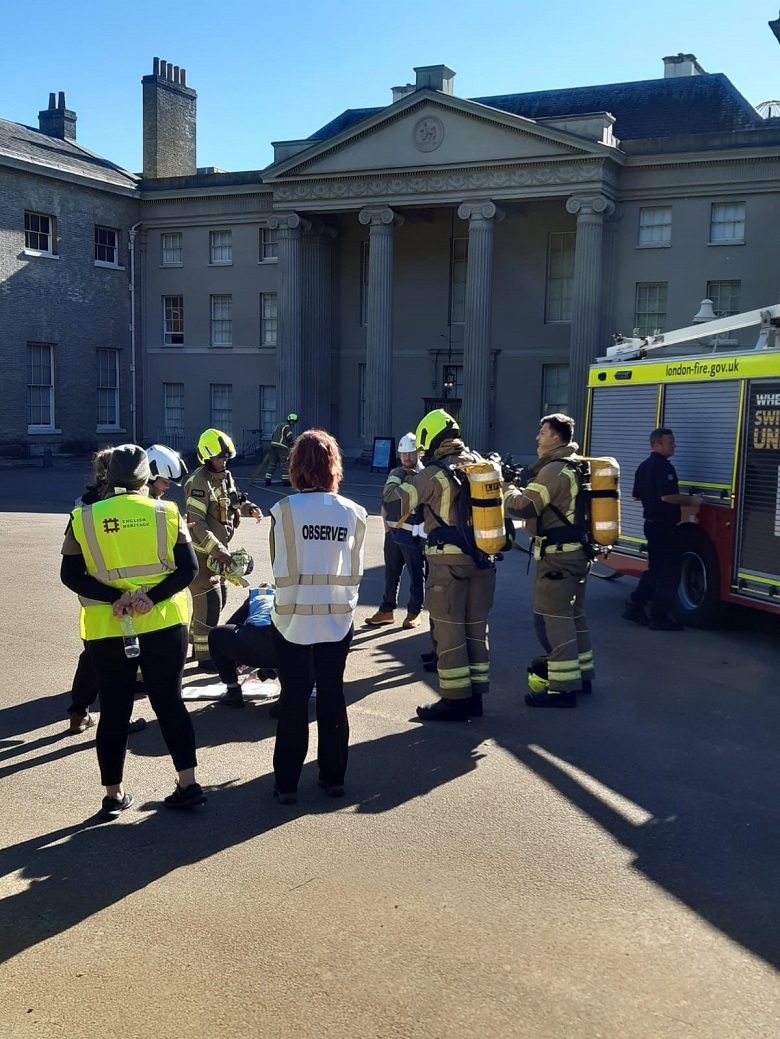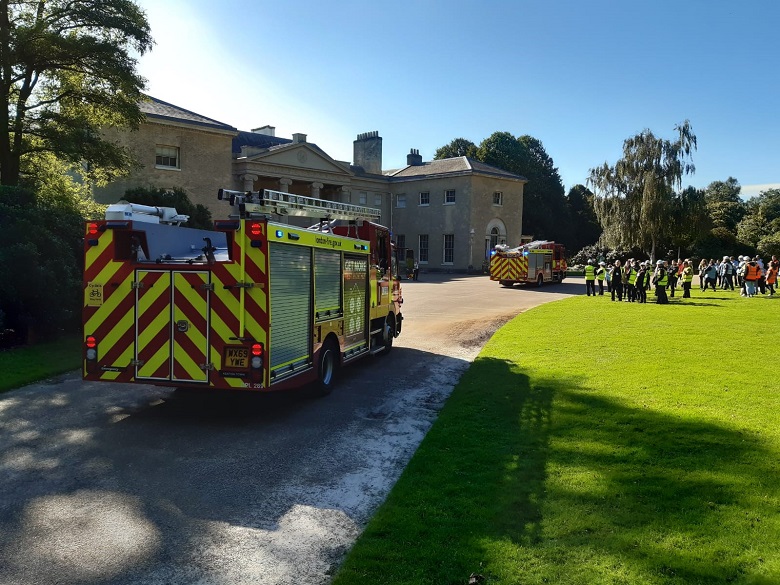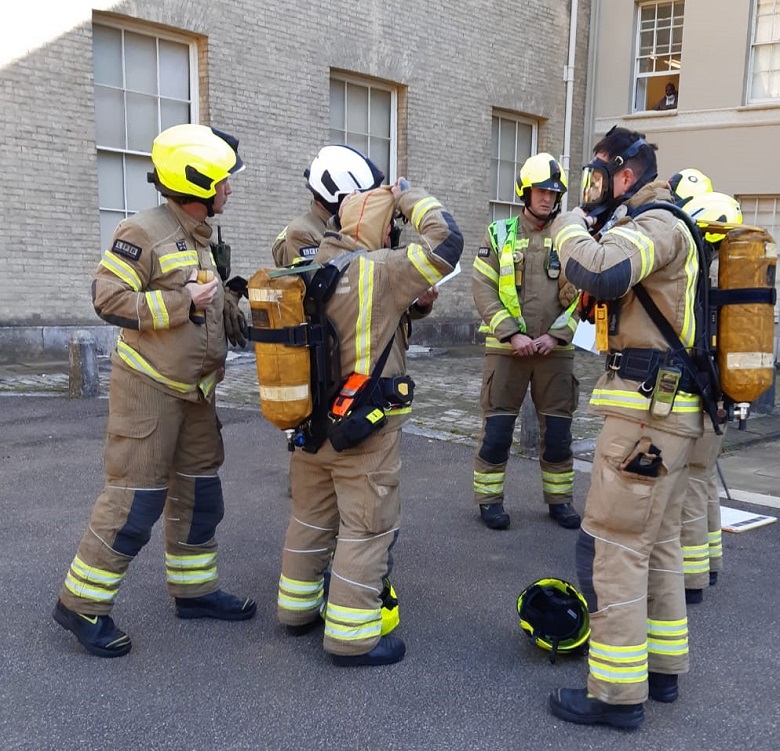Thousands of historic items in London are at risk of being lost forever if venues do not have the correct salvage plans in place, the Brigade has warned.
This week we joined up with English Heritage for a training exercise at their historic building Kenwood House in Hampstead, which is home to a world class art collection. The Brigade has a dedicated Heritage team, who regularly work closely with cultural and historic venues, and carry out drills to rehearse the response to an incident such as fire or flood.

The exercise at Kenwood House saw a mock fire take place and English Heritage staff used their expertise and knowledge to inform fire crews where items were and how they should be handled.
Such rescues are only possible when venues have up to date emergency response and salvage plans in place, and London Fire Brigade is reminding other venues to check their plans.

A salvage plan identifies not only what actions should be implemented by on-site representatives, but also clearly identifies priority items that need to be removed from the building, or protected in place, and allows fire crews to put recovery strategies in place in advance. Plans help firefighters decide what equipment is needed to safely recover or protect items as swiftly as possible and minimise damage. Salvage plans should include ‘Grab Sheets’ which contain vital information about the size of an item, the number of people required to lift it and the location of the item – having this in place can help firefighters save time in a fire or flood.
Every museum, gallery and historic building should have a nominated person responsible for the salvage plan, making sure that a plan exists and is kept up to date. A member of the Brigade’s Heritage Team can provide advice and guidance in relation to salvage planning for organisations who need support.

There are estimated to be over 20,000 listed buildings in London, including many national landmarks, attractions and historic properties, which are home to some very important items of historical value. London Fire Brigade attended 1285 fires at or near heritage sites in the last four years* and 50 fires at cultural venues such as a museum or art gallery. Nationally there’s an average of around one hundred fires at heritage sites a month.**
Our Heritage Team Leader William Knatchbull said: “With so many heritage sites in the capital part of our role is to preserve them for the next generation.
“We can’t preserve these beautiful and iconic landmarks without the venues themselves working with us to have emergency salvage plans in place. All building managers need to be aware how important it is to have a plan should the worst-case scenario ever occur. We welcome those people getting in touch with our dedicated team so we can ensure that the plans are appropriate both for the location and our crews, should they ever get a 999 call to attend an incident.”

Abi Marsh, Head of Historic Properties English Heritage London, said: “Keeping our guests, staff, historic collection and buildings safe is our number one priority, we not only have incredibly stringent preventative fire protection measures in place but also understand the importance of our staff being prepared through training such as this week’s exercise with the London Fire Brigade. We are very grateful to all the team at the London Fire Brigade for their continued work supporting us in caring for our historic spaces.”
Following the fire at Notre Dame Cathedral in Paris two years ago, we wrote to just over 350 venue owners across London, urging them to consider emergency response planning to protect their buildings and the precious items they contain. We also launched dedicated web pages to support heritage sites with specific fire safety advice. The Brigade’s heritage webpage offers a wealth of information and resources for building managers seeking help and support on protecting their buildings to keep them safe for future generations.
*London Fire Brigade data for calls to fires within 15m of a heritage site
**source: Historic England figures for 2019
In May last year firefighters were called to flooding at the Lyceum theatre in the West End. Fire crews attended in the evening and worked to pump water away. Delicate flooring meant the crews had to adapt the equipment they used to get rid of water without damaging the beautiful building. Jaime Brent, Ambassador Theatre Group theatre manager, who was general manager at the Lyceum at the time of the incident said: “The orchestra pit, in the basement of the theatre, was flooded. Crews got to work quickly.
“My message to building managers is to have a salvage plan, and the more you can anticipate, the better the outcome. Never think it won’t happen to you. A detailed salvage plan which the Brigade can use ‘out of hours’ is invaluable. We’re so lucky considering the potential devastation to our historic theatre.”

The Brigade’s Station Commander Chris Line attended the scene, he said: “The Lyceum Theatre incident shows that crews had little time to intervene to protect and prevent further damage to valuable items and property.
“Working with us before an incident occurs can make a big difference to the outcome. With the amount of water that had entered the basement area, we would normally use a High Volume pump to remove the water. Prior knowledge of the site meant we knew we could not put that kind of weight on the old wooden flooring and needed to change our plan."
Chris says venues which have valuable objects need to consider how they want fire crews to operate should they receive a 999 call. He explains: “Salvage plans mean crews know what they need to rescue or protect first. Building managers need to think about salvage plans so that when our firefighters enter a building – bearing in mind they may never have visited before – they need to know exactly what to do, in priority order and in a timely way.”